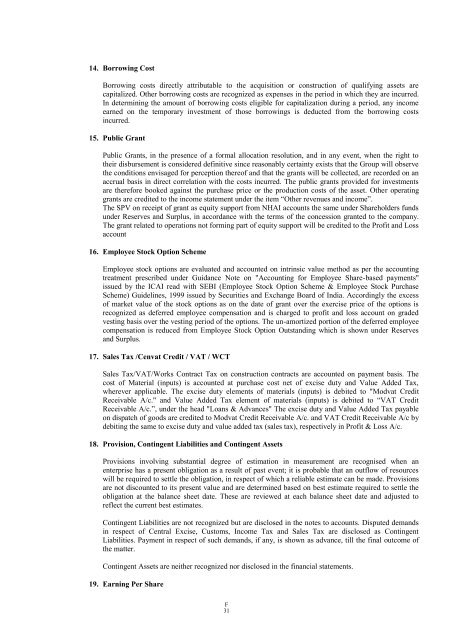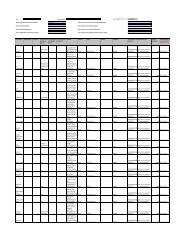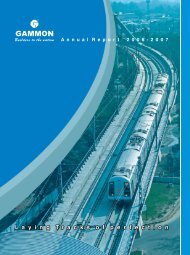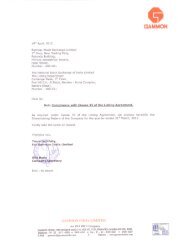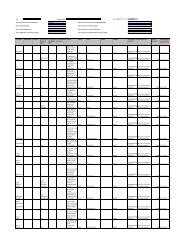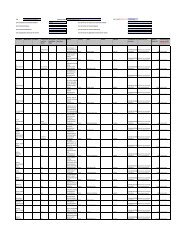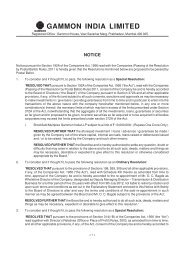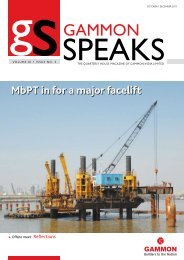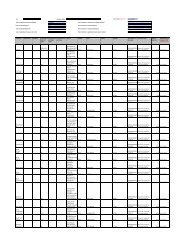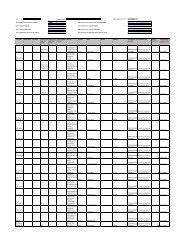GAMMON INDIA LIMITED
GAMMON INDIA LIMITED
GAMMON INDIA LIMITED
You also want an ePaper? Increase the reach of your titles
YUMPU automatically turns print PDFs into web optimized ePapers that Google loves.
14. Borrowing Cost<br />
Borrowing costs directly attributable to the acquisition or construction of qualifying assets are<br />
capitalized. Other borrowing costs are recognized as expenses in the period in which they are incurred.<br />
In determining the amount of borrowing costs eligible for capitalization during a period, any income<br />
earned on the temporary investment of those borrowings is deducted from the borrowing costs<br />
incurred.<br />
15. Public Grant<br />
Public Grants, in the presence of a formal allocation resolution, and in any event, when the right to<br />
their disbursement is considered definitive since reasonably certainty exists that the Group will observe<br />
the conditions envisaged for perception thereof and that the grants will be collected, are recorded on an<br />
accrual basis in direct correlation with the costs incurred. The public grants provided for investments<br />
are therefore booked against the purchase price or the production costs of the asset. Other operating<br />
grants are credited to the income statement under the item “Other revenues and income”.<br />
The SPV on receipt of grant as equity support from NHAI accounts the same under Shareholders funds<br />
under Reserves and Surplus, in accordance with the terms of the concession granted to the company.<br />
The grant related to operations not forming part of equity support will be credited to the Profit and Loss<br />
account<br />
16. Employee Stock Option Scheme<br />
Employee stock options are evaluated and accounted on intrinsic value method as per the accounting<br />
treatment prescribed under Guidance Note on "Accounting for Employee Share-based payments"<br />
issued by the ICAI read with SEBI (Employee Stock Option Scheme & Employee Stock Purchase<br />
Scheme) Guidelines, 1999 issued by Securities and Exchange Board of India. Accordingly the excess<br />
of market value of the stock options as on the date of grant over the exercise price of the options is<br />
recognized as deferred employee compensation and is charged to profit and loss account on graded<br />
vesting basis over the vesting period of the options. The un-amortized portion of the deferred employee<br />
compensation is reduced from Employee Stock Option Outstanding which is shown under Reserves<br />
and Surplus.<br />
17. Sales Tax /Cenvat Credit / VAT / WCT<br />
Sales Tax/VAT/Works Contract Tax on construction contracts are accounted on payment basis. The<br />
cost of Material (inputs) is accounted at purchase cost net of excise duty and Value Added Tax,<br />
wherever applicable. The excise duty elements of materials (inputs) is debited to "Modvat Credit<br />
Receivable A/c." and Value Added Tax element of materials (inputs) is debited to “VAT Credit<br />
Receivable A/c.”, under the head "Loans & Advances" The excise duty and Value Added Tax payable<br />
on dispatch of goods are credited to Modvat Credit Receivable A/c. and VAT Credit Receivable A/c by<br />
debiting the same to excise duty and value added tax (sales tax), respectively in Profit & Loss A/c.<br />
18. Provision, Contingent Liabilities and Contingent Assets<br />
Provisions involving substantial degree of estimation in measurement are recognised when an<br />
enterprise has a present obligation as a result of past event; it is probable that an outflow of resources<br />
will be required to settle the obligation, in respect of which a reliable estimate can be made. Provisions<br />
are not discounted to its present value and are determined based on best estimate required to settle the<br />
obligation at the balance sheet date. These are reviewed at each balance sheet date and adjusted to<br />
reflect the current best estimates.<br />
Contingent Liabilities are not recognized but are disclosed in the notes to accounts. Disputed demands<br />
in respect of Central Excise, Customs, Income Tax and Sales Tax are disclosed as Contingent<br />
Liabilities. Payment in respect of such demands, if any, is shown as advance, till the final outcome of<br />
the matter.<br />
Contingent Assets are neither recognized nor disclosed in the financial statements.<br />
19. Earning Per Share<br />
F<br />
31


